
|
Olympus Camedia C-5050Z image samples |

| My other pages related to the Olympus C-5050Z, C-5060WZ, and X-7070WZ |
|
The pictures at the left are full frames, reduced to 320x240 pixels and resharpened. They are included to show the location and relative size of the 1:1 samples, which are shown at the right. The 320x240 samples are fragments of unmanipulated originals — just cropped and re-saved at a very low JPEG compression, so that they can be representative as to the "original" image quality. The samples show detail larger than it will be printed. For 8x10" prints, the sample height will correspond to 1.14" (29 mm) on paper, while for 11x14" ones — to 1.57" (40 mm). The C-5050Z allows to set the sharpness, contrast, and color saturation attributes of images, more exactly of the process in which the "raw" CCD data (30 bits per pixel) is translated into the stored image (24 bits per pixel). The samples at this page were all taken in all these settings at "Normal", unless explicitly stated otherwise. Sunny day conditions My regular subject: the Crofton pond, right off my door. At least I don't have to go anywhere to shoot these samples... |
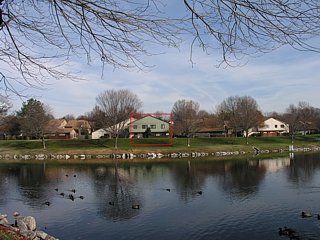
|
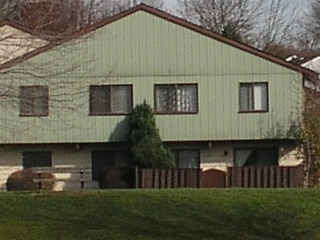
| |
| EFL=35mm (F=7.1 mm), program mode, -0.3EV exposure compensation (1/650s, F/4.5), compression 1:4. | ||
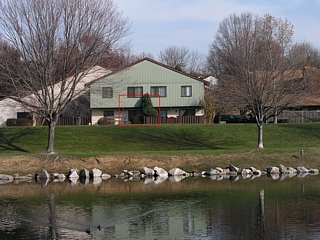
|
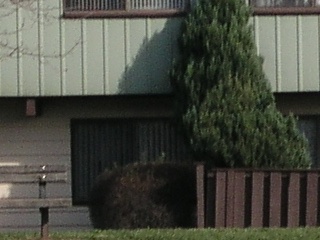
| |
| EFL=105mm (F=21.3 mm), program mode, -0.3EV exposure compensation (1/800s, F/4), compression 1:4. | ||
|
(More similar samples, taken on another day, and including full-size images for download, can be found in my page on lens attachments.) Outdoors, diffused bright light Here is another set (added in the June, 2003 update to this page) with a more forgiving subject: less contrast, bright, diffused light. | ||
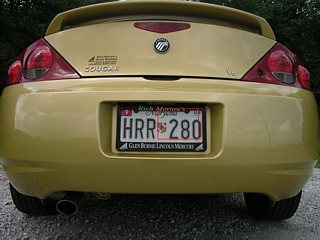
|
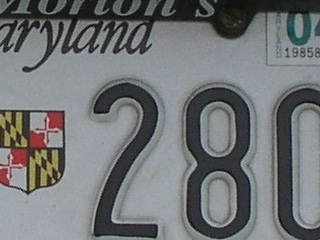
| |
|
EFL=35 mm (F=7.1 mm); aperture priority with -3 EV compensation: 1/400 s at F/4, tripod. Sharpness at -2, contrast at -1, saturation at +1 (my favorite settings) | ||
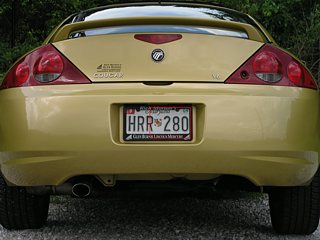
|
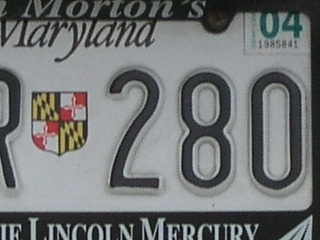
| |
|
EFL=105 mm (F=21.3 mm); all other conditions as above | ||
|
Northern sky, incandescent, and fluorescent light To see how well does the '5050 handle various light sources, have a look at my white balance article. See also my "super macro" mode samples from the C-5050Z in a separate piece. Actually, this is the first external flash picture I took with the '5050, minutes after opening the box. Looks like the camera co-operates very nicely with the Olympus FL-40 flash; exposure and color balance seem to be on the spot. | ||
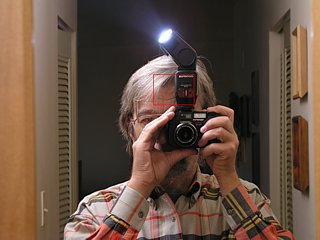
|
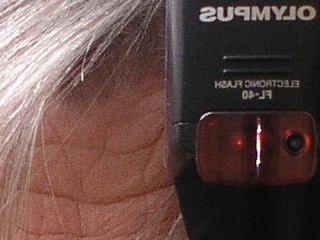
| |
| EFL=105 mm, program mode at -0.3EV, 1/100s at F/2.8, contrast and sharpness at -1, saturation at "Normal". The FL-40 flash set by the camera. | ||
|
This is the area where film cameras used to have an advantage over digital ones, but the gap is closing fast. Here are two pictures I took during a trip to Warsaw, Poland, in January, 2003. Without a tripod, I used the ISO 400 setting (at ISO 64 the first picture would require an exposure of almost one second, not too handholdable, especially in subfreezing temperatures). Contrary to some panicking reviews, the noise, although clearly visible in the 1:1 samples, does not seem excessive, and prints up to 9x12" should come out quite nicely. | ||
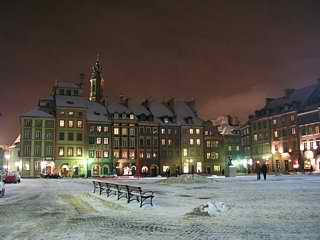
|
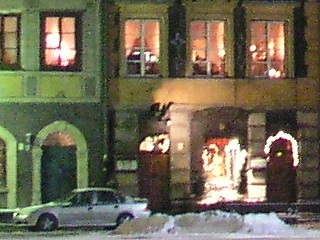
| |
| EFL=35 mm (F=7.1 mm), program exposure with -0.7 EV compensation: 1/8 s at F/1.8 and ISO 400, handheld; sharpness, contrast, and saturation at "normal", auto white balance | ||
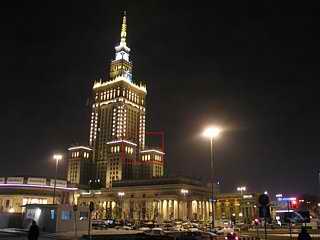
|
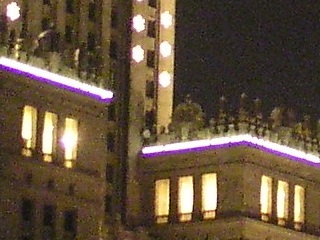
| |
| All parameters as above, except for the 1/15 s shutter speed | ||
|
In this kind of shooting I usually apply -0.7 EV or even stronger exposure compensation, and it seems just right here. The camera's dynamic range is quite good, and the color holds nicely as well. Definitely, this camera can be successfully used as a night shooter. You may ask why I have not used the noise reduction here. Simple: it actually works only at exposures of 1/2 s or longer; wouldn't make any difference here. Another alternative, which I've also checked, is to use the Neat Image noise-reduction program. This works quite well, but I prefer the non-processed versions anyway, with slightly more detail at the expense of some noise roughness; your taste may differ here. Comparison with the E-20 Now, this is quite interesting. I've set both cameras to program exposure, no compensation, all image settings at "Normal", and spot metering, exposing for the house wall. The images were saved as 1:4 JPEGs. All shots were taken from the same spot and within a period of four minutes, in order to assure identical conditions (a more contrasty light may be easily confused with greater sharpness; see the first samples, taken a week earlier in a late-afternoon light). Here are 1:1 samples from both cameras, without any postprocessing. | ||
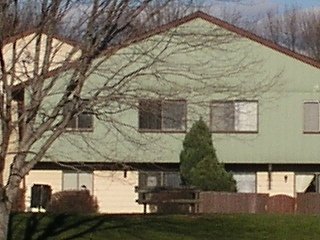
|
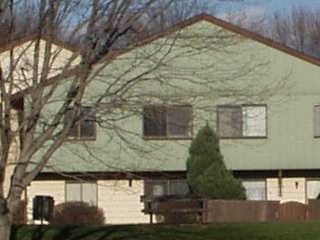
| |
| C-5050Z: EFL=35mm, 1/800s, F/5.6, ISO 64 | E-20: EFL=35mm, 1/640s, F/5.6, ISO 80 | |
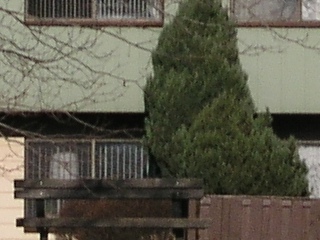
|
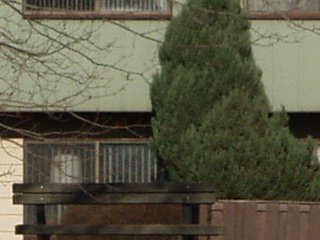
| |
| C-5050Z: EFL=105mm, 1/800s, F/5.6, ISO 64 | E-20: EFL=105mm, 1/640s, F/5.6, ISO 80 | |
|
The pictures from the C-5050Z are slightly sharper and have more contrast. What does this mean? Not much: probably the newer camera, aiming a little below the E-20's market, has more aggressive "Normal" settings for sharpness and contrast. Still, that the sharpening is not really excessive; if you magnify the samples, you will barely see any traces of "bouncing" on the contrasty edges of tree branches against the sky, unlike in many cameras (no names, please!). Generally, if you are not planning any postprocessing of your pictures, you may find the default-setting results from the C-5050Z more pleasing. The spot metering in both cameras ended up delivering very similar results it terms of brightness, color, and tonality; this is seen in (reduced and re-sharpened) full-frame versions of the first pair of samples above: | ||
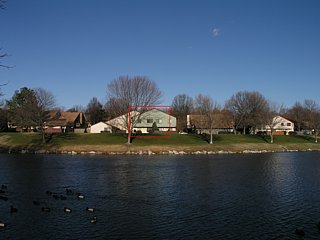
|
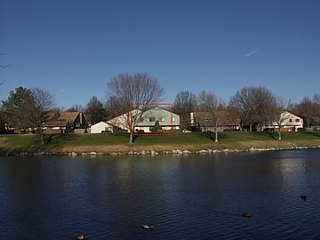
| |
| C-5050Z: EFL=35mm, 1/800s, F/5.6, ISO 64 | E-20: EFL=35mm, 1/640s, F/5.6, ISO 80 | |
|
Interestingly enough, the E-20's ISO 80 setting feels more like ISO 50 when compared to the C-5050Z — a quick look at the recorded exposure values clearly shows a 2/3 EV difference between both cameras (1/3 in shutter speed, and 1/3 in the ISO). Conclusion The C-5050Z combination of lens, CCD, and firmware is capable of delivering excellent results, at par with those of the E-20. A very impressive performance.
Note of June, 2005: After using the camera for two and a half years, I'm still enthusiastic about its image quality. My comments still stand.
Back to the C-5050Z review. | ||

| My other pages related to the Olympus C-5050Z, C-5060WZ, and X-7070WZ |
|
Camedia® and Olympus® are registered trademarks of Olympus Corporation.
This page is not sponsored or endorsed by Olympus (or anyone else) and presents solely the views of the author. |
| Home: wrotniak.net | Search this site | Change font size |
| Posted 2002/11/26; last updated 2007/03/10 | Copyright © 2002-2007 by J. Andrzej Wrotniak |